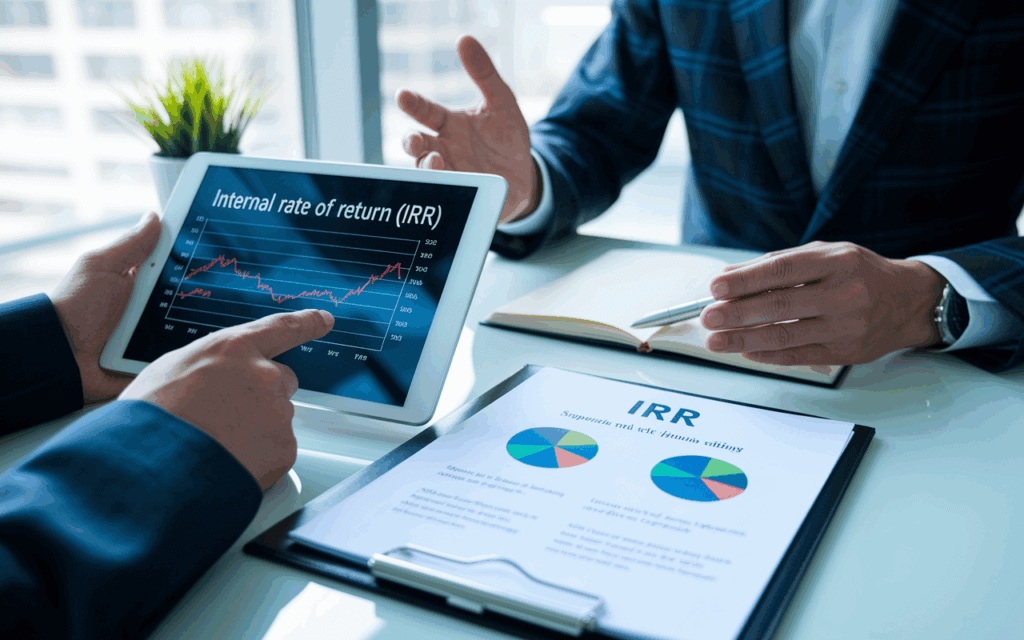Why August Is the Perfect Time to Review Your Real Estate Strategy

Investing in real estate can be an exciting and rewarding endeavor—especially when your investment contributes to lasting, community-centered development. At Goodin Development, we believe in full transparency, and that includes helping our investors feel confident navigating the financial landscape. If you’re new to the process, understanding common terms used in real estate investment can go a long way. This guide breaks down essential terminology to help first-time investors feel informed and empowered.
An individual or entity that meets specific income or net worth requirements set by the SEC (Securities and Exchange Commission). This designation allows you to invest in certain private offerings that aren’t available to the general public. At Goodin Development, we confirm accreditation during the on-boarding process to ensure compliance with regulatory standards.
The hierarchy of capital used to finance a real estate project, typically including senior debt, mezzanine debt, and equity. Each layer carries its own risk and return profile. Equity investors (like those partnering with Goodin Development) are typically last in the stack to be repaid but share in the potential upside if the project performs well.
The income generated from a property after all operating expenses and debt service are paid. Investors may receive a portion of this cash flow through regular distributions, depending on the structure of the investment and the stage of the project.
Payments made to investors, typically from cash flow or profits. These can be structured as monthly, quarterly, or annual disbursements. At Goodin Development, the timing and nature of distributions are outlined clearly in each project’s offering documents.
A measure of total return on investment. It is calculated by dividing total cash received by the total equity invested. For example, a 2.0x equity multiple means the investor received double their original investment over the life of the project.

IRR is a metric used to estimate the profitability of an investment over time. It considers both the amount and timing of cash flows. A higher IRR generally indicates a more attractive investment, though it’s best used alongside other metrics like equity multiple and cash flow consistency.
These legal documents provide detailed information about an investment opportunity, including financial projections, risks, legal structure, and the business plan. At Goodin Development, we share these materials with all investors before any commitments are made.
A predetermined return that is paid to investors before the developer or sponsor receives any share of profits. This helps ensure investors are compensated for their capital risk. Not every deal includes a preferred return, but it’s a common feature in many offerings.
The point at which a property has achieved expected occupancy levels and is generating steady income. This often marks the beginning of consistent cash flow and potential distributions for investors. For development projects, stabilization may take one to three years after construction is complete.
A method for distributing profits among investors and developers based on predefined tiers. The waterfall structure outlines who gets paid, when, and how much, after initial capital and preferred returns are paid. This structure is included in the operating agreement for each project.
A tax form issued annually to each partner in a real estate investment partnership. It outlines the investor’s share of income, losses, and other tax-related information. Investors with Goodin Development receive a K-1 each year for their tax preparation.
The planned method for concluding the investment and returning capital to investors. Common exit strategies include selling the property, refinancing, or holding long-term for cash flow. Each project at Goodin Development includes a clearly defined exit plan based on market conditions and project goals.
Beyond financial returns, Goodin Development also tracks and reports on social and environmental outcomes—what we call “Impact ROI.” This includes affordable housing units delivered, community engagement outcomes, sustainability metrics, and support for local businesses. These factors are central to our mission and are shared with investors as part of our reporting process.
Investing for the first time doesn’t have to feel overwhelming. By understanding these key terms, you’re already taking an important step toward making informed decisions and building a strong foundation for your investment journey. At Goodin Development, we’re committed to educating and supporting our investors every step of the way—from the first conversation to the final project exit.
If you have questions or want to explore current opportunities, we’re here to help. Contact us to connect with our team and start your journey with confidence.
This site is protected by reCAPTCHA and the Google Privacy Policy and Terms of Service apply.
Web design by Webisserie
No Offer of Securities—Disclosure of Interests. Under no circumstances should any material on this site be used or be considered as an offer to sell or as a solicitation of any offer to buy an interest in any investment. Any such offer or solicitation will be made only by means of the confidential private offering memorandum relating to the particular investment. Access to information about the investments are limited to investors who either qualify as accredited investors within the meaning of the Securities Act of 1933, as amended, or those investors who generally are sophisticated in financial matters, such that they are capable of evaluating the merits and risks of prospective investments. Past performance is not indicative of future results. All investments have risk and we strongly recommend you seek professional guidance before making any investment.